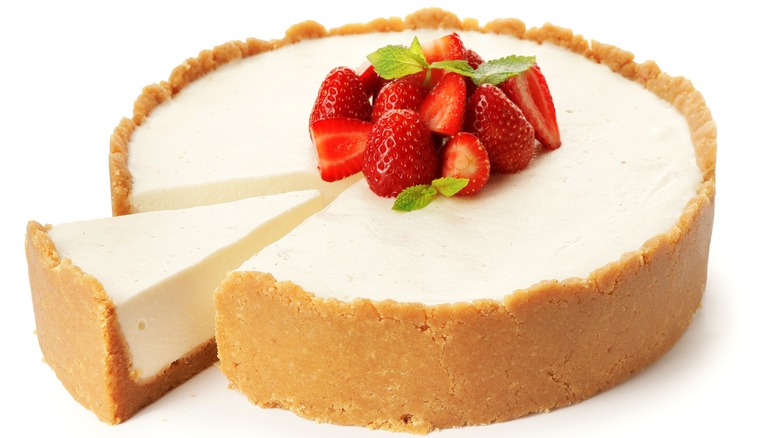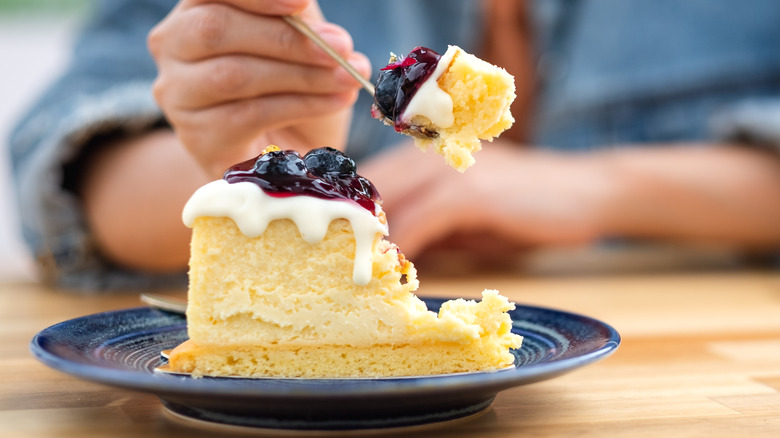The Easiest Way To Check If Your Cheesecake Is Done
Not all of us have access to a great cheesecake, so we often have to bake it ourselves. But, for one reason or another, cheesecake has a reputation for being a tough dessert to get right, let alone master. There are so many variations out there, not just in the U.S. but worldwide, and each comes with its own foibles. So, it can get quite difficult to know what tips and tricks will bring you the best results when making a good ol' cheesecake. For example, some swear by a water bath for cheesecakes, while others aren't a fan of this method.
There are also several mistakes you can make when making a cheesecake, and you won't even know that you've gone off the rails until your cheesecake is cooling or the moment you taste it. Overmixing your ingredients or overbaking are both mistakes that can lead to cracks, and the former can also result in a watery cheesecake (via Kitchenarry). Though, when it comes to actually eating a cheesecake, the one thing we can all agree on is that an overbaked cheesecake is possibly worse than no cheesecake at all.
A perfectly baked cheesecake should slightly jiggle in the center
If you're low-key terrified of overbaking your cheesecake, you're not alone. Overbaked cheesecakes will sink and have an unsightly crack or two, and the texture will be dry, mealy, crumbly, and generally unappetizing. Baked cheesecakes call for eggs, and when eggs are overcooked, their proteins constrict and forms a grainy texture. This is why a nice, gentle bake is important for cheesecakes, per Nigella Lawson. No amount of topping will be able to disguise the unpleasant texture of an overbaked cheesecake.
If you jiggle a cake and it wiggles throughout, it's not done. While cheesecakes should have a little wobble to them, they should not be as jiggly as, say, a bowl of Jell-O. For a perfectly baked cheesecake, it's important that you don't open the oven until your recipe's suggested time frame, and then give your springform pan a gentle tap with a wooden spoon. The edges should be set, but the center should have some movement. However, if the whole thing ripples, it's not done (via AllRecipes). When it's reached the ideal amount of wobble, cool your cheesecake gently, as rapid temperature shifts will result in the dreaded crack. And if a crack does develop, some artful placement of whipped cream should easily hide it.

